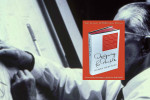The perfect design brief

Designers cannot be successful if the problem and solution parameters are not known. Great design briefs are the result of a partnership between design and business.
Creating the Perfect Design Brief: How to Manage Design for Strategic Advantage by Peter Phillips
Partnership between design and business
Creating the Perfect Design Brief: How to Manage Design for Strategic Advantage outlines the recipe for a successful collaboration between design and business teams to define the problem to be solved and inspire the entire team with a vision that pushes them to be as creative as possible. To write a great design brief, start with the business context to convey the ultimate benefit and drivers for the request. Designers need a business partner to create a great design brief. A business owner is the expert in their business problem, but not an expert in the best approach to solve it. Design briefs are not just contracts between a business unit and the design team. The brief should be a roadmap for the project which spans inception through completion. The entire project team should contribute to, review, and discuss the design brief. Everyone needs to know the business objectives and success metrics. Inclusion also helps eliminate an us/them divide when approaching the solution.
Design briefs are most commonly used in industrial, package, and graphics design, but share many characteristics with software and product requirements. Although every design project starts with some type of brief, there are few books which cover the topic. Peter L Phillips shows how to create a great brief and how to use the brief to ensure a successful design project outcome.
Similarly, product requirement formats differ, but product development is rarely successful if the team does not have a deep understanding of the problem to be solved and its context. Because product managers frequently work with user experience designers this book offers a great perspective on design and discusses how design projects should be initiated and successfully managed. Substitute “requirements” for “brief” to put this book into a product management context.
If design is a problem-solving discipline, then great design must start with a thorough understanding of the problem to be solved–which is found in a great design brief.
Focus on business context
Designers who are perceived as artists are not considered strategic, business-savvy partners, but rather as clever people who draw well.
To write a great design brief, start with the business context to convey the ultimate benefit and drivers for the request. Without this knowledge, the designer will only be executing on a set of instructions rather than finding a creative solution that provides benefits for other people. Without understanding the “why” behind the request, the designer cannot create the best solution. Specifying the “what” too tightly constrains the design project and results in a lackluster outcome.
Phillips focuses on business goals and outcomes to counter design-specific feedback from clients and stakeholders. There are plenty of opinions available in design reviews and feedback sessions. When a stakeholder expresses a personal opinion about a design feature, Phillips counters by asking “What business goals are not met because of this design decision?” Likewise, when a stakeholder asks to cut or shorten a project phase, Phillips asks “What are the business risks of eliminating or not fully funding this activity?”
A great design brief is the result of a partnership
Too many designers are satisfied to be simply taxi drivers.
Designers need a business partner to create a great design brief. A business owner is the expert in their business problem, but not an expert in the best approach to solve it. Phillips rails against designers falling back to simply executing on instructions. Rather than driving a taxi to a destination, designers should be transportation consultants who advise their clients in selecting a train, limo, helicopter, taxi, or bus. He also makes the case that “service” is not a good name for the design function because it implies that the customer is in charge (CEOs do not offer “CEO services”). To be effective, design must be an equal partner with the business, rather than subservient to it.
How could I design or manage design for sales collateral materials if I had never been on a sales call with a salesperson?
Phillips reiterates that to be considered, a core, strategic business partner, designers must be experts in the whole business process. By understanding the goals and business context, a design solution can be effectively evaluated.
What to include in a design brief
It is helpful to think of a design brief as a business plan.
Design briefs are not just contracts between a business unit and the design team. The brief should be a roadmap for the project which spans inception through completion. This translates into a project-tracking tool as well as an outline of the final presentation of the design solution to aid in project approval–the brief sets forth the criteria by which the solution will be judged. Key questions to ask when starting the writing process are:
- What are the primary objectives of the project?
- Why is the project necessary? Why now?
- What business outcomes are desired?
- What are the critical aspects of the project?
- Who are all the key stakeholders?
The entire project team should contribute to, review, and discuss the design brief. Everyone needs to know the business objectives and success metrics. Inclusion also helps eliminate an us/them divide when approaching the solution. Although there is no one-size-fits-all definition of a design brief, the basic elements are:
- Project Overview and Background – includes scope, business needs, objectives, desired outcomes, and stakeholders
- Category review – Discussion of the customer’s industry vertical or segment including products, competitors, pricing/promotion, brand, trends, and business strategy
- Target Audience Review – A comprehensive description of all the customer types
- Company Portfolio – A list of products, services, and business units
- Business Objectives and Design Strategy – Both sides of the brief should be included
- Project Scope, Time Line, and Budget (Phases) – The final phase of the project should be measurement metrics which will substantiate the questions outlined above
- Research Data
- Appendix
A a good design brief should provide inspiration to the design team. In the video below, Phillips reviews a design brief (“Dear Architect”) created by students for an architect of a school.
In this video, Phillips addresses some commonly asked questions about design briefs:
Phillips includes several examples of briefs in the book and emphasizes several key themes throughout: partnership with all business stakeholders, using business goals to objectively evaluate individual subjective feedback, deep understanding of the business and end customer, testing with target audiences, and measurement of outcomes according to achievement of business outcomes. Of course, these are also attributes of successful product development.
Why are so few design projects exceptional?
Bassett & Partners answers this question by holding the design brief up to the light. This short video presents the viewpoints on design briefs by six designers from a variety of fields from advertising to architecture.
Briefs are thought starters
A brief is nothing more than an open statement of ambition for a brand or a client. You can put that in any words…as long as it conveys the passion and conviction of your aim
The more concise the point of view is on “what is the problem”; the better the work will be
It has to inspire the people whose task it is to solve the problem
Briefs are starting points. The team has to acknowledge that the brief will change–it needs “a lot of runway so you can take off.”
A bad brief is too detailed, too long, or too restrictive. The best briefs are “audacious and seemingly impossible”; “a deadline and a dream”; “a provocation”. Constraints are important; they balance the openness of the aspiration–“limitations and invitation”.
Like requirements, a brief is “irrelevant from the moment you make it” because it begins to change as soon as it is introduced into conversation. Briefs should be challenged and pulled at because the best outcomes don’t emerge linearly from the initial brief. The key is to find the “DNA of the project” which is partly contained in cultural context and context of use in daily life and the “why?”.
I don’t believe in briefs. I believe in relationships.
–Yves Behar






